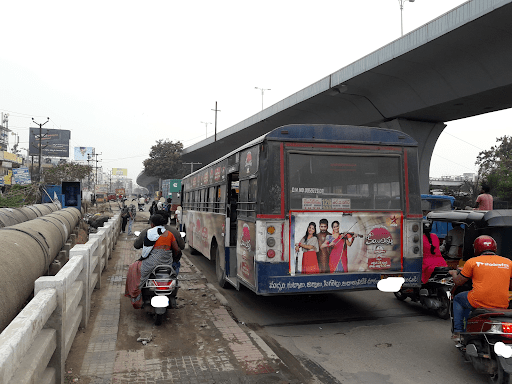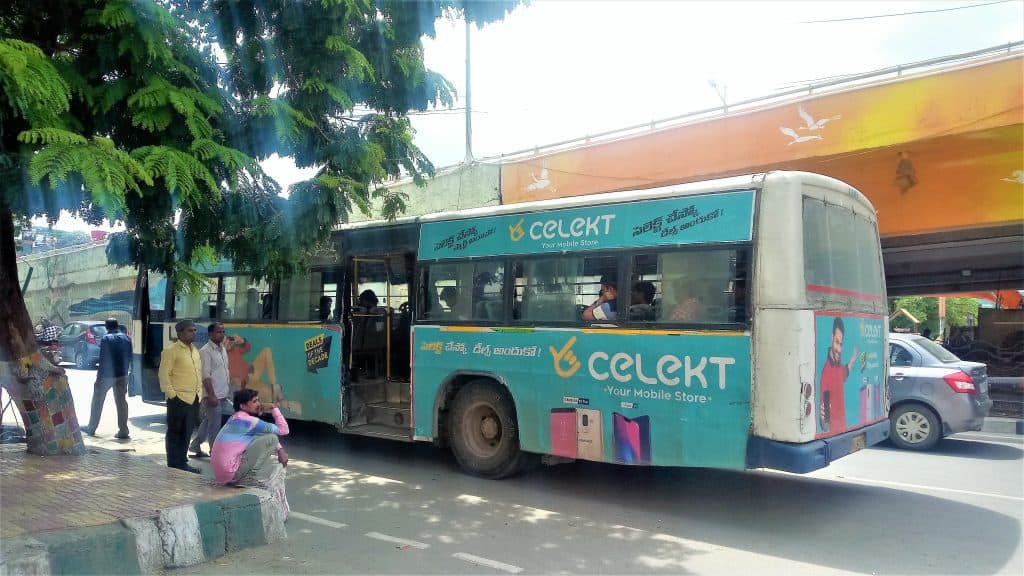My first memories of Hyderabad are the long evening walks watching the sunset along Necklace Road, as a young architecture student welcoming the millenium new year. Now twenty years later, the city has been my home for almost three years, and those memories remain preserved even as the city has grown rapidly, not just in size but aspirations too.
Hyderabad Metropolitan area has been consistently ranked as one of the most liveable cities in India with The Mercer Quality of Living Rating 2019 ranking Hyderabad and Pune as the top cities in India, making it one of the emerging investment destinations in South Asia. Having fuelled the start-up revolution in India, Hyderabad was ranked second globally in JLL’s City Momentum Index in 2019. Recent estimates of the economy of the metropolitan area have ranged from $40 billion to $74 billion (PPP GDP), and have taken it to either fifth or sixth spot among the most productive metro areas of India, according to the Global Metro Monitor (Brookings).
In the mid 90s Hyderabad started its transformation into an IT-ITES hub and in 2007 the erstwhile Hyderabad Municipal Corporation was merged with 12 Municipalities & 8 Panchayats to create Greater Hyderabad Municipal Corporation (GHMC) spanning 625 sq km. Over the years, the GHMC Budget has increased at a growth rate of 11% from ₹3,159 in 2009 to ₹6,983 crore in 2020. Out of this, the GHMC component was ₹5380 crore while the remaining is to be raised by Telangana State Housing Corporation and the Hyderabad Road Development Corporation.
In recent years the city has focussed on road infrastructure projects like the elevated Outer Ring Road, PVNR Expressway, Hyderabad Metro Rail, and Strategic Road Development Plan (SRDP) for rejuvenating the existing transport networks.
With the Corporation budget for 2021-22 is to be approved this month, long pending areas of concern need committed focus. As a citizen and urban practitioner, I feel these are the five key areas which have been ignored and need adequate attention going forward.
Pedestrian facilities
Hyderabad enjoys a moderate climate through the year, except during the two months of summer which makes it ideal for walking. Yet, not much has been done to develop footpaths, walkways, crossings and pedestrian infrastructure. Just a year back in 2019, KT Rama Rao the Municipal Administration Minister emphasised on ‘right to walk’ and directed Zonal Commissioners to lay new footpaths of at least 10 km in each zone. However nothing to this effect can be seen on ground. Crossing roads at many junctions is a nightmare as experienced by me with non existent or ill planned crossings with no thought given to pedestrian safety. A FOB (foot over bridge) on my route on Old Mumbai road lands me bang in the middle of a high traffic road with no footpath.
Read more: What I face everyday as a pedestrian in Hyderabad
In 2020-21, the GHMC budget estimate for roads and pavements was ₹1639 crore, about 30% of the total budget estimate. Clubbing pavements with roads leads to very low actual spend on footpaths. An illustration of this can be seen in the 3-km Khajaguda Model Road with an approved combined cost of ₹55 crore. The footpath cost here is estimated at ₹1.71 crore (3%). The stretch is not completed, with a total ₹30 crore already spent and barely ₹0.3 crore on footpaths, as I have learnt from an RTI that I filed.
Waste Management
Telangana state government released the Solid Waste Management Policy in 2018 with stress on source segregation and achieving service level benchmark of 80% for solid waste recovered/recycled. GHMC has outsourced the solid waste collection, transportation, transfer station construction, composting, development of landfill and waste-to-energy plan construction to Ramky Enviro Engineers Ltd. on public private partnership (PPP) basis. However the door to door tertiary level garbage collection is with GHMC still and in the process of being shifted to Ramky Enviro.
While the GHMC uses hired vehicles to collect the household waste, the concessionaire may choose not to hire these vehicles, which is not going down well with the workers’ union. Recently, with the lay off of labourers and drivers and removal of bins for implementing doorstep garbage collection, waste is seen piling up along some roads. This centralised waste collection system is apparently not working as well as envisaged and needs tweaking to involve all stakeholders, including waste generators, to make it a success. Segregation of waste at source has not picked up despite the mandate of the SWM rules, and a large chunk of waste ends up in landfills.
Lake conservation
Once known as the ‘City of lakes’, the city boasted of some 7000 lakes, natural and manmade both. More than half of these have disappeared and others have shrunk in size over the years. Till the 70s, Hussain Sagar Lake supplied drinking water to a major part of the city before the twin reservoirs – Himayat Sagar and Osman Sagar were constructed on river Musi. Today a large amount of untreated effluents are discharged into this lake spread across 350 ha. In 2020, excessive rainfall led to flooding in various parts of the city, but the twin reservoirs did not receive substantial inflows.
Read more: Hyderabad floods: Who bears the brunt of a golf course on a lake bed?
Rapid urbanisation has led to unchecked encroachments into lakes and connecting inlet and outlet drains disrupting the natural drainage system, which leads to flooding in low lying areas, even with a few hours of rain.

Polluted by chemical and sewage discharge, many of the remaining lakes have turned into cesspools. A CPCB recent technical report has stated that only 26.5% of sewage is treated in the city. The fixing of full tank level (FTL) of lakes needs to be taken up on high priority coupled with remediation measures to restore the water bodies. Recently, a few lakes like Khajaguda Talaab have been spruced up with creation of walking tracks and landscaping around it, but the exercise remains focused largely on beautification rather than on improving the water quality.
Heritage restoration
Hyderabad, dotted with unique Heritage structures ranging from the Kakatiya period to the Qutab Shahi, Nizam and Colonial period, needs to do much more to restore their glory and position the city on the UNESCO Heritage list. The Charminar pedestrianization project lies stalled while the restoration of Moazzam Jahi Market, clock towers and Char Kaman are the only projects which have been completed.
A recent RTI revealed that from ₹41.8 crores earmarked for heritage corridors and preservation in 2015-16, the amount has dwindled to ₹9.5 crore in 2019-20. Several iconic structures like Erum Manzil, Osmania Hospital, Toli Masjid lie in abysmal condition due to lack of upkeep. The application for UNESCO World Heritage site for Golconda & Qutb Shahi Tombs necropolis did not receive substantial push from the state government two years back. With better funding and focus on heritage, Hyderabad can revive its heritage grandeur which will not only stimulate city tourism, but create more tourism-led avenues for the citizens.
Public transport
Private vehicle usage is approximately 48 % in the city as per a surveyconducted by Administrative Staff College of India (ASCI) in 2019. The 69-km Hyderabad Metro ferried about 2 lakh passengers a day pre–COVID which is just 2% of the modal split. MMTS (Multi-Modal Transport System), the low fare suburban rail system, with a ridership of 2.2 lakh per day (Oct 2019, has been a boon for many suburban passengers. While the MMTS is yet to resume post-COVID, there has been a huge demand by citizens for the proposed 84 km MMTS Phase 2 to take off, which is caught in a funding tussle between the Centre and State.
City TSRTC buses serve a major share of commuters with a ridership of 30 lakh plus. In recent years the fleet size of city buses has gone down from 3811 in 2014-15 to 2982 buses. Compare this with Bangalore, which has a similar population and where the BMTC has a fleet size of 6500 buses. Buses provide the first and last mile connectivity to Mass Rapid Transport systems and reduction in numbers shrinks overall public transport usage.
Read more: Notes from Hyderabad: In praise of the bus less taken!
The debt ridden TSRTC owing to the pandemic is struggling to revive its occupancy ratio, which was 56.7% in January 2021. With diesel rates at a high, earnings have gone down and no new electric buses have been added other than the 40 added two years back. Barely 250 new buses have been added in the last six years, which shows the lackadaisical approach to public transport. With the economy opening up post pandemic, a long term vision for reviving TSRTC and MMTS Phase 2 is necessary, not only for reducing dependence on private vehicles but also curtailing air pollution.
Today as Hyderabad transforms into a modern metropolis, its splendid culture and history remains intertwined in the city fabric. Improving the living conditions of its citizens and upgrading urban infrastructure, while retaining the natural and built heritage of the city, is the need of the hour.
Also read:



Nicely put, Jasmine. Each of the 5 aspects mentioned by you calls for focused attention and concerted efforts – personally, I’ll really look forward to hearing on initiatives that Hyderabad takes on Non-Motorised Transport (walking, cycling) in a meaningful manner and not just for the sake of it. Waiting for more articles from you. Regards,
Thanks Partha and hope that initiatives are taken up on the NMT front soon.
Well written Jasmine. The most important topics on wish list are covered for GHMC to pick up. Looking forward to budget and actions from GHMC on all these. Your service is much appreciated.
In addition, it will be great if Corporation can do consider and think/action more on Bicycle infrastructure and promotion of Bicycle in Hyderabad City.
Note: I am Bicycle Mayor of Hyderabad, representing BYCS, an Amsterdam enterprise.
Excellent is the word to describe your article. How to make concerned persons READ your article? I want to circulate my recent Letter to Editor, The Hans India, Hyderabad, titled HOW ABOUT AUDITING PAVEMENTS? The topic is highly relevant.. B.R.Sant